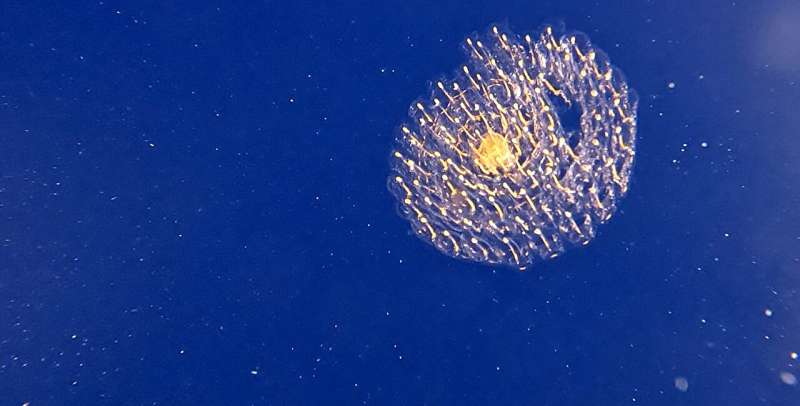This article has been reviewed according to Science X's editorial process and policies. Editors have highlighted the following attributes while ensuring the content's credibility:
fact-checked
proofread
Characterizing salps as predators of marine microbes

A huge fraction of global flows of carbon and other nutrients pass through marine microbes. Little is known about their causes of death, however. This information determines where those nutrients will go.
Recent work on microbial death via viral lysis and protistan predation is helping close the gap, but there remains a missing source of microbial mortality. Anne Thompson from Portland State University and colleagues explore the role played by salps, pelagic tunicates that feed by pumping seawater through mucous mesh nets, filtering out and capturing particles such as preferred microbes.
Salps send the carbon in microbes to the deep sea as sinking fecal pellets—or to predators of salps such as seabirds and sea turtles. The authors conducted SCUBA dives to characterize salp predation in the vast oligotrophic North Pacific Subtropical Gyre, an area dominated by small-cell microbes, especially the very small Prochlorococcus.
The authors collected live salps (Pegea confoederata and Salpa maxima) and quantified the clearance rates for different microbial prey types. They also used quantitative PCR to compare the guts of Pegea confoederata to seawater. The research is published in the journal PNAS Nexus.
Despite the dominance of Prochlorococcus in seawater, microbes of that type were not found in higher concentrations in salps. Instead, salp guts were rich with Crocosphaera, Synechococcus, diatoms, and Chrysochromulina.
Given the shapes and sizes of these taxa, the authors argue that simple mechanical principles—particle size, mesh dimensions or flow rates through the mesh—are not sufficient to explain cell capture by salps.
According to the authors, salps play a major role in controlling the abundances and function of microbial communities in the vast nutrient-poor open ocean, with global implications.
More information: Anne W Thompson et al, Ubiquitous filter feeders shape open ocean microbial community structure and function, PNAS Nexus (2024). DOI: 10.1093/pnasnexus/pgae091
Provided by PNAS Nexus




















